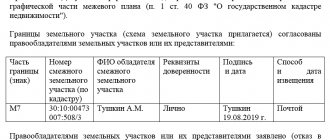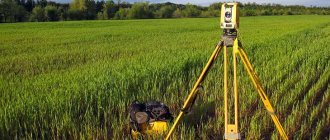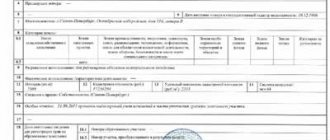Land is one of the most valuable resources of the state, therefore its use must be rational, safe, and planned. To comply with such requirements, all land areas are divided into certain categories, according to which the intended purpose of the land plot is determined. When exploiting the land area, not only the characteristics of the category are taken into account, but also the types of permitted use.
- 1 Types of intended use
- 2 Requirements
- 3 Features
- 4 Specially protected areas
- 5 Forest fund
- 6 Industrial lands
- 7 Permitted use
- 8 Violations and liability
- 9 Law
It is important for legal entities and individuals who own land to have an understanding of these concepts (category, VIR, intended purpose), since using the land for other purposes is a serious offense.
Types of intended use
The main law regulating the use of land is the Land Code of the Russian Federation . According to the Land Code of the Russian Federation, several categories of land are distinguished according to its intended purpose:
- This is land for agricultural activities.
- Lands of populated areas.
- Lands of the forest fund.
- Lands of the water fund.
- Land plots intended for industry. These include territories where energy, transport, communications enterprises, industrial complexes, and defense facilities operate.
- Specially protected areas.
- Special purpose lands.
- Reserve lands.
Use of land not in accordance with the category requirements entails administrative liability. All categories by purpose include areas of different types of permitted use. In order to acquire land and operate it according to the intended plan and purpose, you must first find out its type of permitted use and category.
How can I find out the category and permitted use for a site? Such information can be issued by the cadastral service; the VIR classifier, which indicates the codes of the plots taking into account their purpose, will also help determine the choice of land.
How to get a?
So where to go for this? You need to contact the local administration, taking with you the following set of documents:
- application for the provision of permitted use;
- documents for the plot - cadastral passport, etc.;
- identification documents;
- if there are buildings on the site, then all documents for the buildings.
Requirements
Classifying land areas by purpose is an effective way to force owners to use land rationally and carefully. It allows you to develop new territories in a planned manner and maintain the quality indicators of those where this or that activity is already being carried out.
What do you need to know about the intended purpose of agricultural land? In areas of this category it is possible:
- growing agricultural plants;
- growing fruit trees;
- construction of facilities necessary for farming, processing, storage of agricultural products;
- livestock activities;
- creation of artificial reservoirs for growing fish;
- apiary arrangement;
- maintaining a country house, including the construction of a country house;
- allocation of areas for pastures and grass for livestock feed.
According to its intended purpose, agricultural land is not intended for residential or industrial construction. Activities other than agricultural may be carried out on such sites if a transfer to another category is carried out.
ATTENTION! The transfer is carried out only based on the results of a state examination, which will confirm that the site cannot be used for agriculture.
If you need to build a private house on a plot of land classified as agricultural land, you need to choose the one that, according to the classifier, is intended for individual housing construction.
Deadlines - Definition
The law clearly defines the time after which land can become ownerless and inefficiently used.
The rule applies equally to agricultural land, as well as individual construction projects.
Lease of territorial zones and construction sites requires compliance with the same rules. If three years have passed and there is no implementation, the contract can be terminated unilaterally.
Deadlines for determining ownerless land
Standard provisions also apply to tenants of agricultural lands.
The rule is relevant if the responsibility for processing is assigned to individual entrepreneurs or private individuals. The contract can be canceled three years after signing the document if the requirements are not met.
Peculiarities
This category includes territories in which cities, towns, villages, and other types of settlements are located. It is also diverse in terms of types of permitted use and territorial zoning. In any city there cannot be a residential zone without a public, industrial, administrative buildings and cultural institutions.
When exploiting the lands of populated areas, it is necessary to comply with the types of permitted use. After all, any type of activity on the territory of lands of this category should not pose a danger to people or to the environment.
A category can be replenished with sections that are derived from other categories. For example, agricultural land can be used for residential construction if it has lost its quality characteristics. But it is mandatory to follow the procedure for transferring land from one category to another:
- For this purpose, an examination is carried out to assess the condition of the site and the possibilities of its use.
- An application is drawn up indicating the future purpose of use, for example - the construction of a new residential complex.
- The issue is considered at the level of the Government (if the land is state-owned) or regional authorities, municipalities.
Regarding special conditions
For land, special conditions for use are described in Government Decree No. 160 of 2009. This document was signed by the president.
The main factor for these rules is power lines that provide energy to facilities in all populated areas. There are separate regulations for operation under such circumstances. They apply to:
- Representatives of local electrical utilities serving the population.
- Owners of lands that are located in close proximity to the relevant electrical networks.
The Government of the Russian Federation has separately determined the legal forms of use. These are forms of legal ownership that are divided into two categories:
- Real or limited.
- Commitment.
The allocation of land for the following purposes leads to the emergence of property rights:
- For indefinite, permanent use.
- As a lifelong inheritable possession.
There are clearly defined rules for renting objects.
A limited property right is spoken of when clear terms of operation are established.
The rights of the current owner of the land are limited due to the permitted use from the previous owner. With lifelong inheritance, there is additionally the right to re-inherit the land.
The law of obligations is associated with the following actions:
- Purchase of the property from the administration.
- Re-registration of ownership.
- Privatization.
The right of disposal is transferred from the economic entity to the benefit of another citizen. This entails corresponding legal consequences.
Copyright holders of this category are granted extended rights to use at their own discretion, subject to certain responsibilities. This means that the owners are able to organize the distribution of land and the transfer of objects to other persons.
Specially protected areas
What are specially protected lands and objects? These are territories that represent natural, aesthetic, cultural, and recreational value. Such lands may contain a national reserve, a unique landscape object, or a sanatorium-resort area with a healthy and beneficial microclimate.
ATTENTION! The allocation of lands to this category was necessary to protect their valuable qualities and properties. There is no construction (residential or industrial) on such lands; various measures are taken here to preserve the ecology and cleanliness of the environment.
Sites that fall into this category have a special legal status; violation of their intended use is subject to severe administrative or criminal penalties. There are several subgroups of land in this category:
- These are lands of protected areas.
- Recreational areas.
- Natural areas with special protection status.
- Territories with objects of historical and cultural significance.
- Plots of land of special value.
All these lands are not used for the needs of the national economy.
How to change?
The algorithm of actions is the same as when obtaining permission to use the memory. The only difference in the application is that you must indicate that you want to change the VRI, and also indicate the new VRI to which you want to change the current one.
ATTENTION! After processing your application, you will either be given a new permit, which will need to be registered with Rosreestr, or will be denied, citing improper use of the land. A refusal can always be appealed in court.
Watch the video on the topic:
Permitted use
To protect land as a resource and for its rational and safe use, not only division into categories is provided, but also the establishment of types of permitted use. VIR determines how the law allows the use and exploitation of a particular site.
The following types of use are of greatest interest to individuals:
- individual residential construction;
- country house construction;
- personal subsidiary plot;
- agricultural production;
- residential construction;
- farming;
- residential and commercial development;
- Agriculture;
- country house
Event Request
It happens that for some purpose land of a certain purpose is needed, but there are no plots of a suitable category. A potential solution to this problem is a request (petition) to change the intended purpose of the land.
Such an intention should not contradict a number of federal laws and requires careful preparation and collection of a certain package of documents.
Violations and liability
Responsibility for the use of land plots, taking into account their intended purpose, is determined by the norms of land legislation. In case of violation of the rules for intended use, penalties are provided under the articles of the Code of Administrative Offenses of the Russian Federation.
IMPORTANT! It is impossible to use the land for other purposes, but it is also impossible not to use it for its intended purpose.
If an individual or legal entity acquires a plot for farming, for example, such land should not be idle or fall into disrepair, it should be cultivated according to all the norms of the process. There can be several violations in the field of land use:
- The land user, when operating the site, violates the intended purpose. In this case, he may be awarded a fine, which is calculated using the cadastral value of the site. In general, an individual will have to pay at least 10,000 rubles for misuse of land. And persons in positions can pay from 20,000 to 100,000 rubles.
- If agricultural land is not used, which leads to the loss of its valuable qualities, a fine is also provided. Such an offense is punishable in accordance with the provisions of Federal Law No. 101, adopted in 2002.
- When a plot of land is purchased for residential construction, and then it is simply empty, overgrown with weeds and garbage, the owner will be punished with a fine of 400,000 rubles.
Purpose is an important characteristic of any land. This purpose is taken into account during various operations with the land plot, during its operation, and transfer to another category. You should not purchase land without having an idea of its category, purpose, and types of permitted use.
Ignorance of such information may subsequently become an obstacle to the implementation of all plans regarding real estate. And also, ignorance will not save you from punishment for misuse of land. If damage was caused to the land and surrounding nature during the activity, the fine will be more significant in amount.
Documentation
The application is accompanied by documents that can confirm the authenticity of the applicant’s identity (if we are talking about people with the status of an individual) or confirm the legality of the actions of an individual entrepreneur or legal entity (extract from the unified state register of individual entrepreneurs or legal entities), an extract from the Unified State Register of Entrepreneurs or legal entities, the specific area in respect of which the procedure is to be carried out.
In the event that the current legislation provides for the need to conduct a specialized environmental assessment in relation to a particular site, an expert commission’s conclusion based on the results of the work performed will also be required.
The entire package of documents is checked by employees of the relevant executive authorities for compliance with the requirements of the current legislation of its contents and the person who submitted this package.
If the documents or the person who submitted them do not comply with the specified requirements, all papers are returned to the applicant within no more than thirty days from the date of their receipt, accompanied by a reasoned refusal to accept with a detailed indication of the reason for the refusal.
Within three months, documents are reviewed by the Government of the Russian Federation in relation to lands transferred to its jurisdiction. Two months are allocated to executive bodies in the constituent entities and municipalities.
Based on the results of consideration of the application, a corresponding act is issued, which indicates the assigned category or established type of permitted mode of use or intended purpose, and the date of the decision on such establishment.
Such an act does not have an expiration date, since the next one can be adopted at any time as a result of the occurrence of relevant grounds.
Within fourteen days from the date of recording the decision by drawing up an act, the latter must be sent to the applicant.
You will find out the length of service for retirement in Russia under the new law in our article.
In 2021, Russian military pensions will be increased! Find out more about this event in the article.
There are some changes to unemployment benefits in 2021. Our material has all the information you need.
Law
Sometimes the framework of a certain category to which a site belongs does not allow full use of all its capabilities. In this case, you will need to go through the procedure of transferring land from one category to another.
This procedure is carried out strictly in accordance with the requirements of Federal Law 172 “On the transfer of land...” An application (petition) is submitted to local authorities, in which you must indicate:
- the existing category of land and the desired one;
- Reasons for transfer, reason, motives;
- the result of the examination;
- documents confirming ownership of this land plot;
- its cadastral data, in particular the number.
If the result of consideration of the issue is positive, the applicant will be issued an act of transferring the site to another category. With such a translation, the types of permitted uses also change.
Forms of ownership of land plots
The current version of the Constitution has given Russians the opportunity to register private ownership of land plots.
Private land can belong to both a citizen and a group of persons with the status of a legal entity, partnership or non-profit organization. But also a certain part of the lands, according to Article 9 of the Constitution, remained in the possession of the state and municipalities (local authorities). A mixed version is also allowed.
Chapter 3 of the Land Code is devoted to issues of forms of ownership of plots. The rights of private and public ownership of land are contained in Article 17. Civil Code.
Depending on the form of ownership, different rules apply regarding the turnover of plots. Today anyone can find out what form of ownership applies to a particular memory. Such information is available on the public cadastral map from Rosreestr. To obtain the necessary information, you need to know the cadastral number or the exact address of the site.
Cadastral valuation
This is the name of a special branch of appraisal activity. By law, all lands in the country are subject to accounting. Cadastral value can be called one of the characteristics of land (plot).
Cadastral valuation activities are carried out according to special rules (in particular, according to the methodological instructions of the Ministry of Economic Development) and only by members of the SRO. Here are just some of the assessment objectives:
- determination of the total, collateral, starting (at auctions) or redemption value of land;
- platform for economic feasibility calculations (when it comes to land acquisition);
- calculation of the tax rate.
In some cases, the cadastral valuation of lands for various purposes affects the legal regime for the management and use of lands. For example, especially fertile territories sometimes have a very high cadastral valuation, and on the basis of this, changing the land category of such lands is prohibited.










